Answer
Jan 17, 2019 - 06:21 AM
Purchase intent is a subset of predictive analytics that helps ecommerce store owners and marketers identify the likelihood of future outcomes based on past data.
Whether the sale is happening online or offline, you can judge the touch points via purchase intent.
To put into perspective how purchase intent is important to your business, think of a credit screen predictive scoring system.
The predictive system works by analysing several data points in your financial history such as your salary, your borrowing and payment history, all in an effort to answer one question, “Will you pay back the loan?”
Similarly, purchase intent attempts to demystify the main question in the entire ecommerce chain, “Will this customer purchase the product?”
This kind of prediction has been around in one form or another for many years and every seller has at one time played a hunch whether a site visitor is a potential buyer.
Many businesses are still using gut instinct to make critical business decisions and consequently missing out on the big opportunities.
While store owners and managers have long used purchasing intent as a measure for what consumers will do in the marketplace, we know for sure that they are indeed correlated but also imperfect predictors of future consumer behavior.
One thing you have to give to consumers is that they always intend to buy a product at a specific interval. Occasionally these consumers may fail to fulfill their intentions because of genuine reasons such as dynamic personal circumstances, or changing economic situations.
Conversely, while it is less likely to happen, some crop of consumers will indicate that they do not have intentions to buy a certain product but will end up buying. Just imagine whether you are going to get a new car in the next six months.
If you are like me, you probably do not have such plans but should circumstances change such as getting a raise, a better paying job, or your car broke.
Amidst all these new circumstances and assuming that you already took a survey to express intent to buy a new car, you will see that indeed you will be demonstrating this situation.
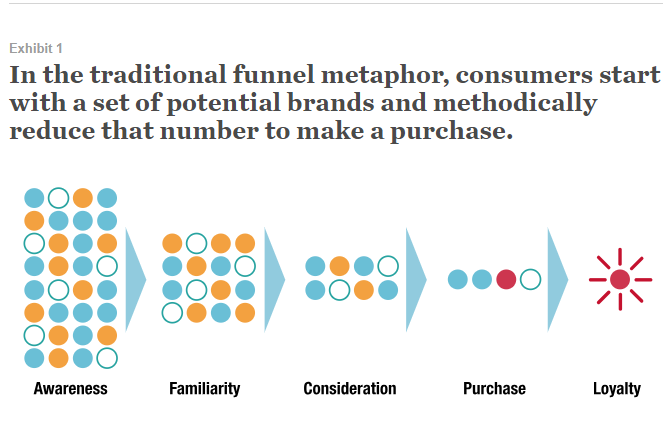
Source: McKinsey
How do consumers make purchase decisions?
A McKinsey article aptly captures your re-targeting concerns by taking you through the historical perspective of the customer decision journey.
It starts by recapping the concept of the marketing funnel and on to newer techniques to crafting moments (herein referred to as touch points) when customers are most open to influence.
How this relates to your small ecommerce store, you may wonder. Each passing day, touch points like advertisements, news reports, casual conversation over coffee, and product experiences influence the kind of perceptions and impressions people build about brands.
All this exposure appears to go to the drain if consumers are not actively shopping. A good thing that may happen down the road is if something triggers the customer’s buying impulse.
The convergence of those cumulative impressions shapes the initial consideration set of brands to consider among their purchasing options. It is in this space of initial brands for customer consideration where you need to find a seat.
McKinsey’s in depth research’s qualitative and quantitative analyses point to a shift from the traditional marketing funnel analogy to a modern circular “consumer decision journey”.
This implies that the approach of trying to get your brand into the funnel and subsequently pushing marketing ads to the customer at each stage to influence their decision is long gone.
The study finds that the decision-making process for customers is now a circular one with four steps: initial consideration, active evaluation (research phase), closure (actual purchase), and post purchase (customer experience) period.
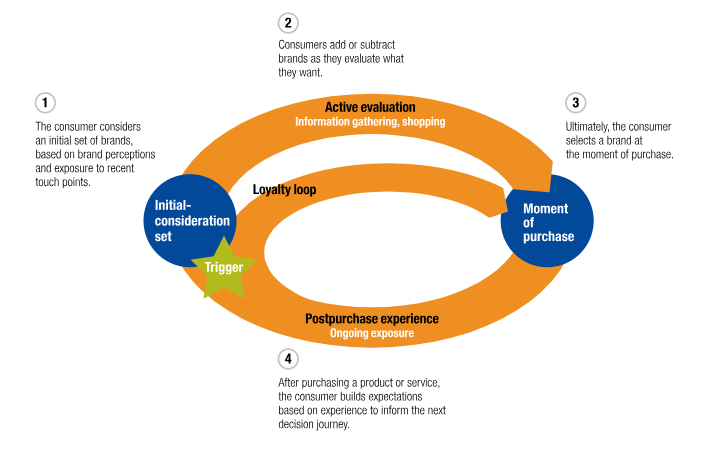
Source: McKinsey
How targets demonstrate buying intent
Since you already mentioned on-site searches, other ways that potential customers demonstrate buying intent include; average time spent browsing products on your store, adding items to cart and as you may have guessed it, Google search.
Some academics have argued that search is the strongest form of expression of customer buying intent.
From own experience, cart abandonment is also a strong indicator of purchase intent. It is interesting to note that cart abandonment is highest in the travel sector but retail also ranks favorably on that list.
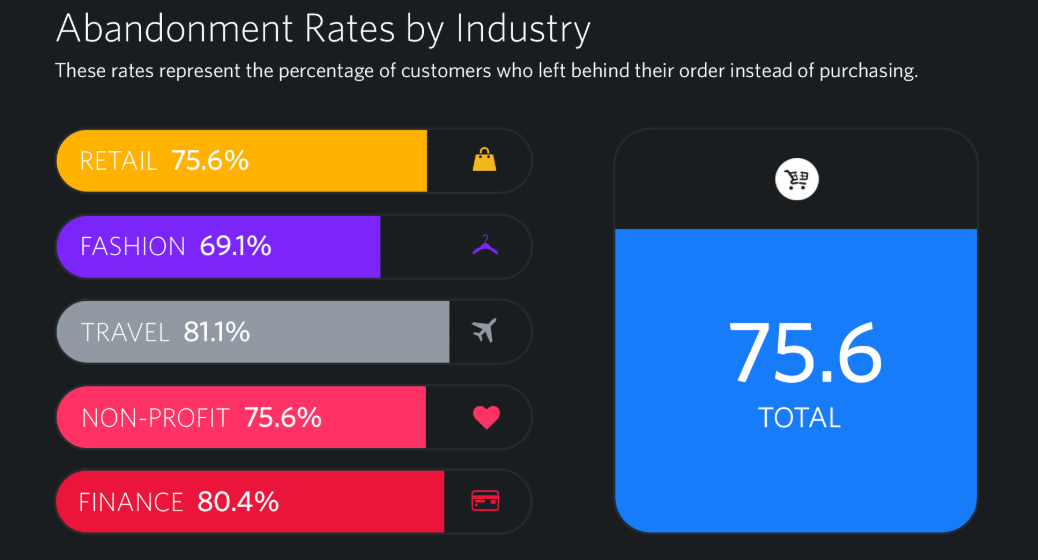
Cart abandonment is a strong indicator of intent and is among the problems with a likely recourse. If you are quick enough to remind clients how to check back for their in-cart items, they may soon be back, provided your mail is relevant and timely.
One upside of cart abandonment is that customers have expressed interest and they have not necessarily given up on the purchase altogether. Often times, some customers are just looking, or are shopping around for a good price, hence they may return once they get satisfied that you have a deal.
SaleCycle tests send times for emails aimed at salvaging abandoned carts and they concluded that timing is key. The best response rates, they found out, came when they sent emails around an hour after the customer had abandoned the purchase.
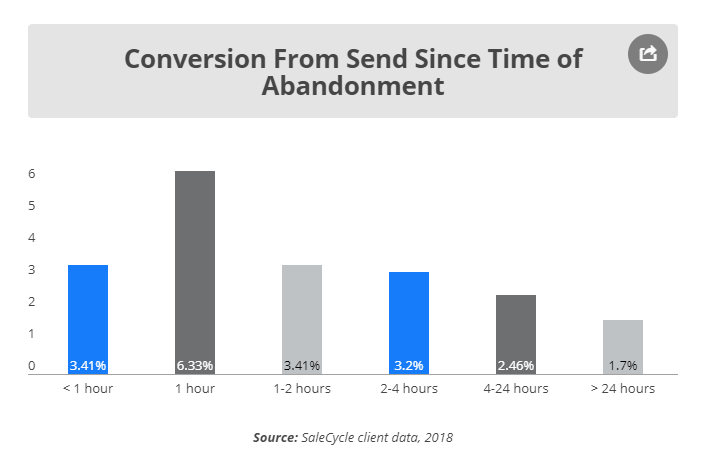
Search Keywords:
You could also predict buying intent by looking at the keywords entered by customers in a search. Keyword intent, as mentioned earlier is among the most crucial aspect of paid search. By not paying keen attention to understand the intent behind visitors’ searches, a well-funded PPC campaign will most certainly fail.
What we found to work for our retargeting campaigns was leveraging keyword intent. This served to increase traffic to our sites and attract better-qualified prospects hence generating more leads and driving more sales.
High intent keywords indicate that the buyer has a strong intention to make a transaction such as a purchase, an enquiry about a service, or an action that has a strong possibility of leading to a sale in future.
This simple diagram by WordStream shows the three basic types of search queries:
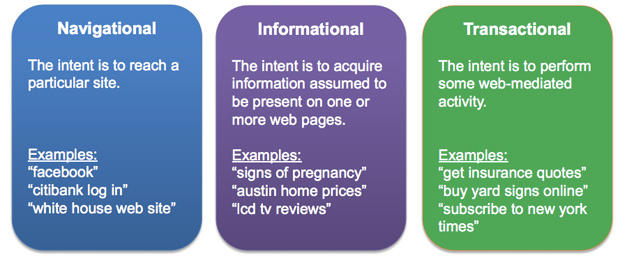
Transactional searches are the one that employ, to a large degree, commercial intent keywords. These are the most promising keywords to look out for on your site. By contrast, navigational and informational queries are low intent keywords and do not have signals for transactions.
You are on the right lane of targeting if you are experiencing the following keyword searches leading to your website:
Buy
Discount
Coupons
Deals
Free Shipping
Offers
What are clients saying about you on the Internet?
Customer experience is a very important aspect of ecommerce. It is a measure of what your past customers feel about your products.
It is important to listen to this lot as it greatly influences how your prospective clients will feel about your product.
The present crop of customers is very perceptive and informed and they will abandon that cart just to go to Reddit and ask about how other users experienced your product.
Any mixed signals will send shivers down their spine and you can be certain that they will not come back. This calls for you to have a clear CTA and methods to manage your reputation online by always listening out to customer views.
Customer purchase intent is a dynamic phenomenon and we will experience newer form and heuristics to measure this intent. Let me know if you need help in deciphering the signals and heuristics you are getting from your visitors.






Add New Comment